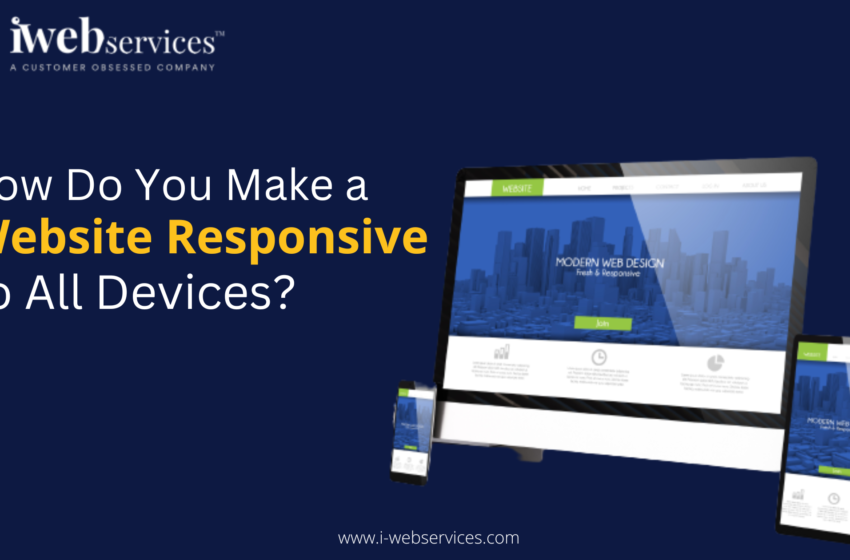How Do You Make a Website Responsive to All Devices?

Responsiveness is the utmost feature for every web application to have because it is a freaking world of the mobile generation where people prefer their handsets to access any tech-based solution. In such circumstances, an unresponsive screen size disturbs website traffic and the business’s aim to grow. As a result, responsiveness becomes essential for any website to own. So, here is the step-by-step process followed by a responsive web development to make a website mobile-friendly:-
Responsive Breakpoints
Responsive breakpoints are the ‘points’ where content and website design adapt to each other and provide a great user experience at different screen sizes. Mobile, tablets, laptops, and smart TVs are of different sizes; hence responsive web developers access the website’s CSS and create multiple breakpoints to make it adaptable to different screen sizes.
Fluid Grid Creation
A fluid grid is a layout of rows and columns which stores the breakpoints and different screen sizes’ positioning values. Developers at responsive web design services use coding in the application’s CSS to create fluid grids of varying screen sizes. This fluid grid includes the height, width, and length of the screen size, along with the touchscreen adaptability of drop-down menus.
Responsive to Touchscreen
Touchscreens are now standard equipment on laptops. Because mouse and touch users have different requirements, responsive websites must be designed with both in mind. Consider creating a form with such a drop-down menu in the desktop view to make it larger and easier to press with the fingertip on smartphones and tablets. Additionally, keep in mind that small features (like buttons) on smartphones are challenging to touch, so make an effort to include graphics, calls to action, and controls that appear correctly across all devices.
Make Selective Elements Responsive.
A website layout is vast, and it is unnecessary to make a complete layout responsive to varied screen sizes. As a result, there is a slight difference between a complete layout and a responsive version because developers omit some less-useful elements from the mobile version of a website.
Image Resizing
One of the trickiest works with responsive web application development is image resizing. Developers define rules in CSS to determine whether images are created to be the full width, eliminated, or treated differently on different displays.
Web Browser And Mobile OS Compatibility
A responsive website is one that, without any distortion, cut, or obscuration, delivers a user-friendly appearance on all platforms and web browsers. As a result, developers need to use CSS to make the layout flexible and adaptable to screen sizes and browsers, including Google, Edge, Yahoo, and many others.
CSS plays a vital role in making a website friendly to different sizes, including mobile, template, and smart TVs. CSS requires a fluid grid, custom breakpoint creation, image resizing, and additional development work to be performed by an expert. As a result, responsive app design services are the best way to make websites friendly to different mobile screen sizes.
In addition to responsive web development, you can also hire mobile app developers from iWebServices.




